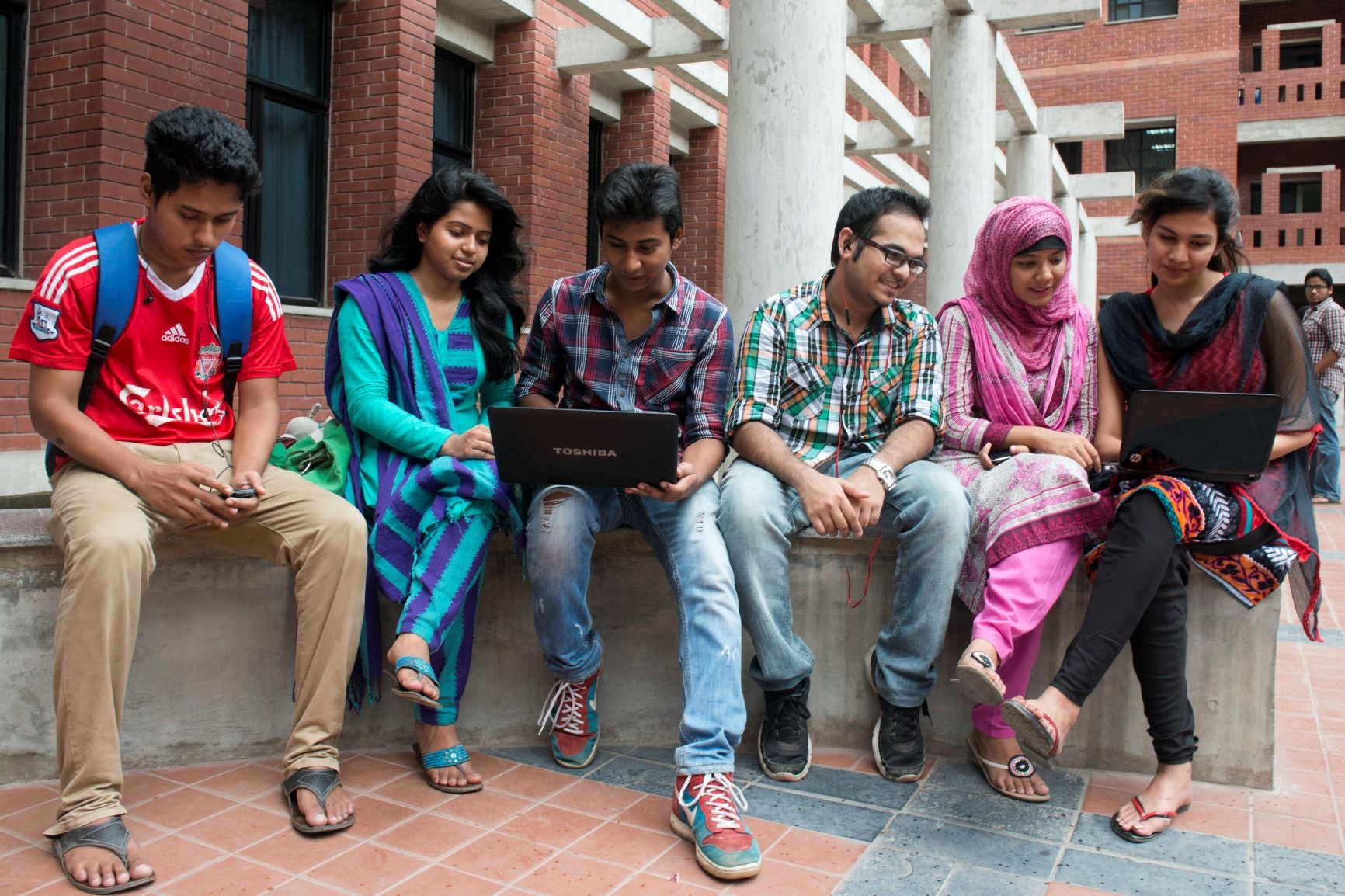 Earlier this year, most universities in Bangladesh lacked basic digital infrastructure for online learning. Photo: World Bank
Earlier this year, most universities in Bangladesh lacked basic digital infrastructure for online learning. Photo: World Bank
At the start of this year, most universities in Bangladesh lacked basic learning management systems and digital infrastructure. So, when institutions were required to close because of COVID-19, educators could no longer teach.
The country’s University Grants Commission (UGC) rose to the challenge and introduced policies requiring all universities to go digital, to make teaching and learning activities accessible online—including admissions.
Within four months, digitization was mainstreamed. An average of around 3,800 classes are held online daily with more than 220,000 students in attendance. Thus far, a total of around 203,200 classes have been conducted to more than 9.2 million attendees by 10,200 faculty members.
What explains this success?
A large part of it is due to the support and backing provided by the Bangladesh Research and Education Network (BdREN). One hundred forty-seven out of the 153 public and private universities in the country are receiving support from BdREN to teach online.
The Government of Bangladesh with support from the World Bank initiated the process of digitizing higher education of Bangladesh through the Higher Education Quality Enhancement Project (HEQEP) in 2009.
BdREN, an initiative of HEQEP, began laying the foundations of digital infrastructure for higher education institutions by establishing high bandwidth and secure network connectivity at institutions. Despite these efforts, no online classes were offered by local universities.
In March, when UGC issued its directive, BdREN responded by helping universities set up institutional accounts on Zoom, an online platform already familiar to educators which gained popularity during the pandemic. They also helped teachers and university faculty get up-to-speed with opening accounts, classroom management and assessment, and tips on making virtual classrooms more efficient. BdREN also set up a hotline to support students with network connection problems.
Many students had returned to homes in rural areas and it took a few weeks to iron out the difficulties they faced finding a suitable hot spot from where to work.
For Bangladesh, this marks an incredible step forward as the digitization of the higher education sector paves the way for further innovation.
While progress has been significant, there is still a long way to go. For starters, in order to keep up with the increasing demand for virtual learning, equipment and infrastructure needs, significant investment is needed. Teachers and university management staff also require more training to operate online classrooms that are engaging and interactive.
The positive feedback from universities has also led to many primary and secondary schools requesting their services. The important role of BdREN in developing human capital and the increased demand for its services has convinced policymakers to invest more in digital infrastructure of BdREN and the education sector.
Bangladesh’s Higher Education Acceleration and Transformation (HEAT) project will provide further support to universities and UGC to cope with COVID-19, and invest in the digital infrastructure of the education sector. It will also enhance BdREN’s capacity to support higher education institutions and ensure connectivity for education and research institutions across the country.
Bangladesh is experiencing a surge in its youth population and the pandemic has halted the progress of skilling up labors and hampering growth. With more support and funding, Bangladesh can adapt to the challenge and come out even stronger than before.






Join the Conversation